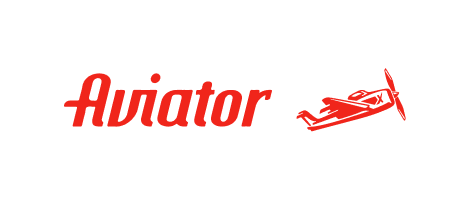Best Soccer Cleats For Turf And Artificial Grass
If you’re searching for soccer cleats that really perform on turf and artificial grass, you’ll want to know what makes some stand out from the rest. Not all cleats grip these surfaces the same way, and the right pair can help you play with more confidence, speed, and precision. Before you make your next purchase, it’s worth knowing exactly what features set the best options apart—you might be surprised at what truly matters.
What Sets Artificial Turf Soccer Cleats Apart
When playing on artificial turf, selecting the appropriate soccer cleats is essential for performance and comfort. AG (Artificial Ground) cleats are specifically engineered for these surfaces. They incorporate numerous rubber studs designed to deliver effective traction and enhance durability compared to traditional grass cleats.
One significant characteristic of turf cleats is their lower profile, which facilitates quick changes in direction and helps reduce the likelihood of injuries. The configuration of the studs is optimized to distribute pressure evenly across the foot, thereby improving comfort during gameplay and offering protection against the firmer surface of artificial turf.
Additionally, rubber studs are less abrasive on synthetic fields, which can extend the lifespan of the turf. With the right cleats, players can maintain a focus on their performance without being hindered by discomfort or concerns related to the playing surface.
Top Features to Look For in AG Soccer Cleats
When selecting AG soccer cleats, it's important to recognize the key features that contribute to their effectiveness on artificial surfaces. One critical element is the design of the studs; AG cleats typically feature shorter and more numerous rubber studs. This design enhances traction and stability on synthetic fields, helping to mitigate the risk of slips during play.
The materials used in the construction of soccer cleats also play a significant role in their performance and durability. High-quality materials, such as leather or advanced synthetic fabrics, can offer both comfort and longevity, which are essential for athletes who engage in regular training and competition.
Another vital consideration is the midsole cushioning. A well-cushioned midsole aids in shock absorption, which is particularly beneficial since the hardness of artificial grass can place additional stress on joints. Providing adequate support is crucial for avoiding injuries over time.
Lastly, achieving the right fit is fundamental. AG soccer cleats should provide a snug fit without being overly tight, allowing players to maintain both control and comfort throughout the duration of the match. Proper fitting ensures that the cleats perform optimally and enhance overall playing experience on artificial surfaces.
The Best Overall Soccer Cleats for Turf
The Nike Phantom GX 2 Elite AG is widely regarded as a strong choice for soccer cleats designed for turf surfaces. Key considerations for turf cleats include comfort, traction, and safety, all of which this model seeks to address.
The cleat features a grippy upper and conical studs that are intended to enhance traction on artificial grass, potentially reducing the risk of injuries and improving control during play.
Professional athletes, including Erling Haaland and Gavi, have been observed using the Nike Phantom GX, which may speak to its reliability and performance in high-level competition.
The cleats are available in 12 colorways and a range of sizes from US 4 to 13, catering to a variety of preferences and needs. The retail price is set at approximately $145, which positions it within a competitive range for quality soccer cleats for turf.
Expert Picks: Quality, Speed, and Control on Turf
When selecting turf soccer cleats, it's important to consider the specific features that contribute to performance on artificial surfaces. Turf soccer cleats are engineered to enhance touch, traction, and agility, which are essential for effective play.
The Nike Mercurial Vapor 16 Elite is known for its focus on speed, offering a lightweight design that can facilitate quick movements.
The Adidas Predator Elite, on the other hand, is recognized for its precise passing capabilities, largely attributed to its textured rubber fins that aid in ball control and accuracy.
For those prioritizing durability and stability, the Mizuno Alpha presents a strong option, as it combines quality materials that withstand the rigors of play on turf.
Each of these cleats has been designed with specific advantages in mind, making them suitable choices depending on a player’s individual needs and playing style.
Youth Artificial Turf Soccer Shoes: Key Considerations
When selecting youth artificial turf soccer shoes, it's essential to focus on fit, support, and specific features that enhance performance and safety on the field. A properly sized shoe is vital; it should fit snugly to accommodate agile movements while allowing for some room for growth.
Adequate midsole support is necessary to cushion and protect growing feet, reducing the risk of injuries that can occur during play. The outsole of the shoe should have shorter rubber studs designed for optimal traction on synthetic surfaces, which can improve stability and maneuverability.
Durability is another important factor; shoes with reinforced toes can withstand the wear and tear associated with frequent play. Additionally, padded collars enhance comfort and provide additional support, particularly in youth who may be more susceptible to discomfort during extended use.
AG vs. FG Soccer Cleats: Understanding the Differences
When selecting soccer cleats for artificial turf, it's important to understand the distinctions between AG (Artificial Grass) and FG (Firm Ground) models, as this choice can significantly affect performance and safety.
AG cleats are specifically designed with shorter and more numerous studs, which are intended to provide optimal traction on synthetic surfaces. This design facilitates even pressure distribution and minimizes the risk of injury.
In contrast, FG cleats are suited for natural grass surfaces and feature longer studs that can create discomfort when used on turf. The longer studs may not provide adequate grip on artificial surfaces, potentially impacting mobility and stability during play.
Therefore, for athletes engaging in games on artificial turf, AG cleats are recommended due to their targeted design that enhances performance and reduces the likelihood of injury.
Leather vs. Synthetic: Which Upper Material Is Best for Turf?
The choice between leather and synthetic uppers for turf footwear is significant due to the distinct properties of each material that can influence performance. Leather uppers are often praised for their comfort, offering a traditional fit that molds to the foot over time, which can enhance ball control on turf surfaces.
However, a notable drawback is their tendency to absorb moisture, which may affect overall comfort, particularly in wet conditions.
On the other hand, synthetic materials are generally lighter and have the advantage of drying more quickly. They're often designed for durability and improved moisture management, making them a practical choice for various weather conditions.
Many synthetic options feature textured surfaces that can enhance grip and ball control, aligning well with the demands of contemporary play styles.
Ultimately, the preference between leather and synthetic uppers is subjective and depends on individual priorities. Players who favor the classic feel and comfort of leather may choose that option, while those who prioritize performance metrics such as weight and moisture management may lean towards synthetics.
It's important for athletes to consider their specific playing conditions and personal comfort when making this decision.
Tips for Getting the Right Fit and Comfort
When selecting turf soccer cleats, it's essential to ensure they fit properly and provide the necessary comfort throughout the duration of play.
Begin by opting for cleats labeled “AG” (artificial grass), as these are specifically designed for synthetic surfaces, unlike those intended for firm ground.
It is advisable to try on several pairs to evaluate both width and length, as these dimensions are crucial for comfort.
The material of the upper also plays a significant role; leather typically adapts to the foot's shape over time, whereas synthetic materials often offer a lighter option but may not conform as well.
Additionally, cushioned midsoles should be prioritized to help absorb the impact when playing on hard turf, which can reduce fatigue and potential discomfort.
Finally, it's important to consult the sizing chart provided by each manufacturer, as variations in brand sizing can affect overall fit and comfort, potentially increasing the risk of injury if not taken into account.
Latest Deals on Popular Artificial Turf Soccer Cleats
When selecting artificial turf soccer cleats, it's essential to consider fit and comfort, as these factors can significantly impact performance on the field. Currently, there are several competitive options available at varying price points.
The Nike Phantom GX 2 Elite AG is priced at $145 and is engineered specifically for artificial turf surfaces, offering features that enhance traction and ball control.
Another noteworthy option is the Mizuno Alpha II Made in Japan AG, available for $139.99, which utilizes high-quality materials aimed at improving the overall playing experience.
For those looking for a more budget-friendly choice, the Adidas Predator Elite AG is retailing at $111 and includes control-enhancing rubber fins, which may assist players in maintaining better ball control.
Additionally, the Puma Ultra 5 Ultimate AG is priced at $77.99 and is a viable choice for those prioritizing performance within a lower price bracket.
Lastly, the Nike Mercurial Vapor 16 Academy AG is available for as low as $76.97, providing an economical option without compromising essential attributes.
Conclusion
Choosing the right soccer cleats for turf and artificial grass can make all the difference in your performance and comfort on the field. Focus on AG-specific features like shorter studs, supportive midsoles, and durable materials. Don't forget to consider your fit, playing style, and budget. With standout options from Nike, Adidas, and Puma, you’ll be ready to play your best game—no matter the surface. Make sure you grab the pair that suits you before the next match!

